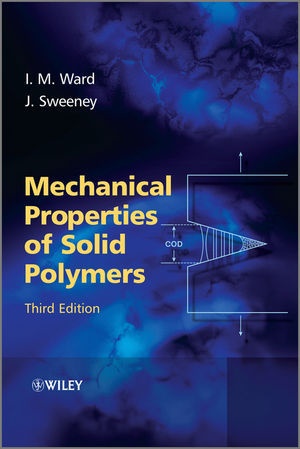Read more
Informationen zum Autor Professor Ian M. Ward is an internationally recognized and well respected authority on this subject. Chair in Physics at Leeds University since 1970, he has gained a reputation as an outstanding scientist. He is also a co-founder of the British Polymer Physics Group and the winner of several awards, including the Glazebrook medal of the Institute of Physics (2004) and the Netlon award (2004) both given for his work in polymer physics. Professor John Sweeney holds a Personal Chair in Polymer Mechanics at the University of Bradford. He has researched in various areas of solid polymer behaviour, including viscoelasticity, fracture mechanics, shear banding, large deformations and nanocomposites. He is well known for his collaborations with Professor Ward and his association with the internationally recognized Polymer IRC (Interdisciplinary Research Centre). Klappentext Providing an updated and comprehensive account of the properties of solid polymers, the book covers all aspects of mechanical behaviour. This includes finite elastic behavior, linear viscoelasticity and mechanical relaxations, mechanical anisotropy, non-linear viscoelasicity, yield behavior and fracture. New to this edition is coverage of polymer nanocomposites, and molecular interpretations of yield, e.g. Bowden, Young, and Argon.The book begins by focusing on the structure of polymers, including their chemical composition and physical structure. It goes on to discuss the mechanical properties and behaviour of polymers, the statistical molecular theories of the rubber-like state and describes aspects of linear viscoelastic behaviour, its measurement, and experimental studies.Later chapters cover composites and experimental behaviour, relaxation transitions, stress and yielding. The book concludes with a discussion of breaking phenomena. Zusammenfassung Providing an updated and comprehensive account of the properties of solid polymers, the book covers all aspects of mechanical behaviour. This includes finite elastic behavior, linear viscoelasticity and mechanical relaxations, mechanical anisotropy, non-linear viscoelasicity, yield behavior and fracture. Inhaltsverzeichnis Preface xiii 1 Structure of Polymers 1 1.1 Chemical Composition 1 1.1.1 Polymerisation 1 1.1.2 Cross-Linking and Chain-Branching 3 1.1.3 Average Molecular Mass and Molecular Mass Distribution 4 1.1.4 Chemical and Steric Isomerism and Stereoregularity 5 1.1.5 Liquid Crystalline Polymers 7 1.1.6 Blends, Grafts and Copolymers 8 1.2 Physical Structure 9 1.2.1 Rotational Isomerism 9 1.2.2 Orientation and Crystallinity 10 References 16 Further Reading 17 2 The Mechanical Properties of Polymers: General Considerations 19 2.1 Objectives 19 2.2 The Different Types of Mechanical Behaviour 19 2.3 The Elastic Solid and the Behaviour of Polymers 21 2.4 Stress and Strain 22 2.4.1 The State of Stress 22 2.4.2 The State of Strain 23 2.5 The Generalised Hooke's Law 26 References 29 3 The Behaviour in the Rubber-Like State: Finite Strain Elasticity 31 3.1 The Generalised Definition of Strain 31 3.1.1 The Cauchy-Green Strain Measure 32 3.1.2 Principal Strains 34 3.1.3 Transformation of Strain 36 3.1.4 Examples of Elementary Strain Fields 38 3.1.5 Relationship of Engineering Strains to General Strains 41 3.1.6 Logarithmic Strain 42 3.2 The Stress Tensor 43 3.3 The Stress-Strain Relationships 44 3.4 The Use of a Strain Energy Function 47 3.4.1 Thermodynamic Considerations 47 3.4.2 The Form of the Strain Energy Function 51 3.4.3 The Strain Invariants 51 3.4.4 Application of the Invariant Approach 52 3.4.5 Application of the Principal Stret...

